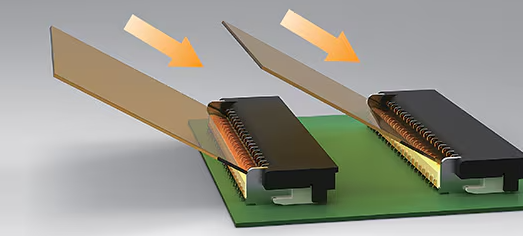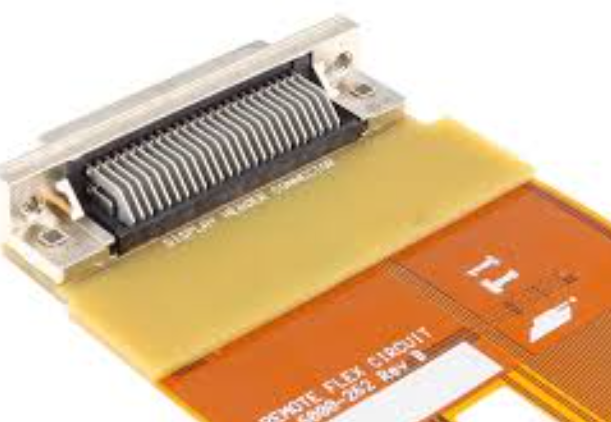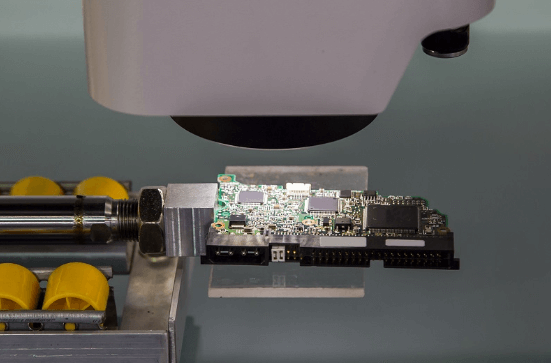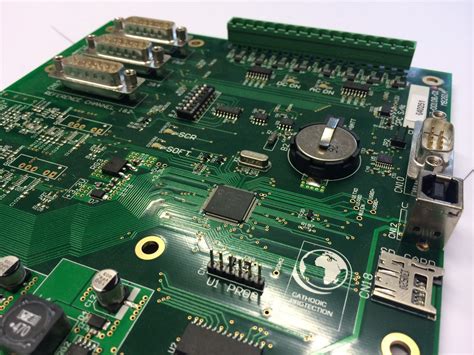Smd flexible pcb connector
Advantages Of Using SMD Flexible PCB Connectors In Modern Electronics
Surface-Mount Device (SMD) flexible PCB connectors have become increasingly integral in the realm of modern electronics, offering a multitude of advantages that cater to the evolving demands of contemporary technology. These connectors, designed to be mounted directly onto the surface of printed circuit boards (PCBs), provide a seamless integration that enhances both the functionality and reliability of electronic devices.
One of the primary advantages of SMD flexible PCB connectors is their ability to save space.
In an era where miniaturization is paramount, the compact nature of these connectors allows for more efficient use of PCB real estate. This is particularly beneficial in applications such as smartphones, wearable devices, and other portable electronics where space is at a premium. By reducing the footprint of the connectors, designers can allocate more room for other critical components, thereby enhancing the overall performance and capabilities of the device.
In addition to space-saving benefits, SMD flexible PCB connectors also contribute to improved signal integrity.
The direct mounting technique minimizes the length of the conductive paths, which in turn reduces the potential for signal loss and electromagnetic interference (EMI). This is crucial in high-frequency applications where maintaining signal fidelity is essential. Consequently, devices that employ these connectors can achieve higher data transfer rates and more reliable communication, which is indispensable in today’s fast-paced digital world.
Moreover, the flexibility of these connectors offers significant advantages in terms of design versatility.
Unlike rigid connectors, SMD flexible PCB connectors can bend and conform to various shapes and contours. This adaptability is particularly advantageous in complex electronic assemblies where space constraints and unconventional geometries are common. For instance, in automotive and aerospace applications, where components must fit into tight and irregular spaces, the flexibility of these connectors ensures that the design can accommodate the necessary electrical connections without compromising on performance or reliability.
Another notable benefit is the ease of assembly and manufacturing.
SMD flexible PCB connectors are compatible with automated pick-and-place machines, which streamlines the production process and reduces labor costs. The automation not only enhances efficiency but also ensures a higher degree of precision and consistency in the placement of the connectors. This is critical in high-volume manufacturing environments where even minor deviations can lead to significant quality control issues.
Furthermore, the robustness and durability of SMD flexible PCB connectors cannot be overlooked.
These connectors are designed to withstand various environmental stresses, including thermal cycling, vibration, and mechanical shock. This resilience makes them suitable for use in harsh environments, such as industrial machinery and outdoor electronic systems. The reliability of these connectors ensures that the devices they are integrated into can maintain optimal performance over extended periods, thereby reducing the need for frequent maintenance and replacements.
In conclusion, the advantages of using SMD flexible PCB connectors in modern electronics are manifold. From space-saving and improved signal integrity to design versatility and ease of manufacturing, these connectors offer a comprehensive solution that addresses the diverse needs of contemporary electronic devices. Their robustness further ensures that they can endure the rigors of various applications, making them an indispensable component in the advancement of modern technology. As the demand for more compact, efficient, and reliable electronic devices continues to grow, the role of SMD flexible PCB connectors will undoubtedly become even more pivotal.

How To Choose The Right SMD Flexible PCB Connector For Your Project
Selecting the appropriate SMD flexible PCB connector for your project is a critical decision that can significantly impact the performance, reliability, and overall success of your electronic design. To make an informed choice, it is essential to consider several key factors that will guide you towards the most suitable connector for your specific application.
First and foremost, understanding the electrical requirements of your project is paramount.
This includes evaluating the current-carrying capacity, voltage ratings, and signal integrity needs. SMD flexible PCB connectors come in various configurations, each designed to handle different electrical loads. For instance, high-current applications may necessitate connectors with robust contact materials and larger pin sizes to ensure efficient power transmission without overheating or signal degradation.
Equally important is the mechanical compatibility of the connector with your PCB layout.
The physical dimensions, pin pitch, and mounting style must align with your design specifications. Surface-mount technology (SMT) connectors are favored for their compact size and ease of automated assembly, but they require precise alignment and soldering techniques. Therefore, it is crucial to verify that the connector’s footprint matches the PCB pad layout to avoid misalignment issues during the manufacturing process.
Another critical consideration is the environmental conditions in which the connector will operate.
Factors such as temperature range, humidity, and exposure to corrosive substances can affect the longevity and performance of the connector. For harsh environments, selecting connectors with enhanced durability features, such as gold-plated contacts or sealed housings, can provide added protection against environmental stressors.
Furthermore, the flexibility and bend radius of the PCB itself should be taken into account.
Flexible PCBs are designed to bend and twist, but the connectors must also accommodate these movements without compromising the electrical connections. Choosing connectors with flexible tails or those specifically designed for dynamic applications can help maintain reliable connections even under continuous flexing.
In addition to these technical aspects, it is also essential to consider the ease of assembly and maintenance.
Connectors that offer features such as easy mating and unmating, polarization to prevent incorrect insertion, and secure locking mechanisms can simplify the assembly process and reduce the risk of connection failures. Additionally, connectors that allow for easy inspection and replacement can facilitate maintenance and troubleshooting, thereby enhancing the overall reliability of the system.
Cost is another factor that cannot be overlooked.
While it may be tempting to opt for the least expensive option, it is important to balance cost with quality and performance. Investing in high-quality connectors from reputable manufacturers can prevent costly failures and downtime in the long run. It is also advisable to consider the availability of the connectors and their compatibility with other components in your supply chain to avoid potential delays in production.
Lastly, consulting with connector manufacturers or suppliers can provide valuable insights and recommendations tailored to your specific needs.
They can offer technical support, samples for testing, and detailed specifications to help you make an informed decision.
In conclusion, choosing the right SMD flexible PCB connector involves a comprehensive evaluation of electrical, mechanical, environmental, and economic factors. By carefully considering these aspects and leveraging expert advice, you can select a connector that not only meets your project’s requirements but also ensures long-term reliability and performance.

Common Applications Of SMD Flexible PCB Connectors In Consumer Devices
Surface-Mount Device (SMD) flexible PCB connectors have become integral components in the design and functionality of modern consumer devices. These connectors offer a unique combination of flexibility, compactness, and reliability, making them ideal for a wide range of applications.
One of the most common uses of SMD flexible PCB connectors is in smartphones.
As these devices continue to evolve, becoming thinner and more feature-rich, the need for compact and efficient connectors has grown. SMD flexible PCB connectors facilitate the connection between various internal components, such as the display, battery, and sensors, without occupying significant space. This allows manufacturers to design sleeker and more lightweight devices while maintaining high performance and durability.
In addition to smartphones, wearable technology also heavily relies on SMD flexible PCB connectors.
Devices such as smartwatches and fitness trackers require connectors that can withstand constant movement and bending. The flexibility of these connectors ensures that the internal circuitry remains intact and functional, even under continuous stress. This is particularly important for wearables, which are often subjected to rigorous physical activity and environmental conditions. The reliability and durability of SMD flexible PCB connectors make them an ideal choice for these applications, ensuring that the devices can perform consistently over time.
Another significant application of SMD flexible PCB connectors is in the realm of consumer electronics, such as laptops and tablets.
These devices often feature complex internal architectures that necessitate the use of flexible connectors to link various components. For instance, the connection between the motherboard and the display in a laptop typically requires a flexible PCB connector to accommodate the hinge mechanism. This flexibility allows the display to open and close smoothly without damaging the internal connections. Moreover, the compact nature of SMD flexible PCB connectors helps in optimizing the internal space, enabling manufacturers to produce thinner and more portable devices.
Furthermore, the automotive industry has also embraced the use of SMD flexible PCB connectors in various consumer-oriented applications.
Modern vehicles are equipped with numerous electronic systems, including infotainment systems, advanced driver-assistance systems (ADAS), and digital instrument clusters. These systems require reliable and flexible connections to function effectively. SMD flexible PCB connectors provide the necessary flexibility to accommodate the dynamic environment within a vehicle, where components are often subjected to vibrations and temperature fluctuations. This ensures that the electronic systems remain operational and reliable, enhancing the overall driving experience.
In the realm of home appliances, SMD flexible PCB connectors play a crucial role in the functionality of devices such as smart refrigerators, washing machines, and microwave ovens.
These appliances often feature complex control panels and displays that require flexible connections to link various components. The use of SMD flexible PCB connectors allows for efficient and reliable connections, ensuring that the appliances operate smoothly and effectively. Additionally, the compact nature of these connectors helps in optimizing the internal space, allowing manufacturers to design more streamlined and aesthetically pleasing products.
In conclusion, SMD flexible PCB connectors have become indispensable in the design and functionality of modern consumer devices. Their unique combination of flexibility, compactness, and reliability makes them ideal for a wide range of applications, from smartphones and wearables to laptops, automotive systems, and home appliances. As technology continues to advance, the demand for efficient and reliable connectors will only grow, further solidifying the importance of SMD flexible PCB connectors in the consumer electronics industry.

Tips For Soldering And Assembling SMD Flexible PCB Connectors
Soldering and assembling SMD flexible PCB connectors require a meticulous approach to ensure optimal performance and reliability. These connectors are integral in various electronic applications, providing the necessary flexibility and compactness. To achieve a successful assembly, it is essential to follow a series of best practices and tips that cater to the unique characteristics of SMD flexible PCB connectors.
Firstly, it is crucial to prepare the workspace adequately.
A clean, organized, and well-lit environment is fundamental to avoid any contamination or errors during the soldering process. Ensuring that all necessary tools and materials are within reach can significantly enhance efficiency and precision. Tools such as fine-tipped soldering irons, tweezers, magnifying glasses, and high-quality solder are indispensable for handling the delicate components involved.
Before commencing the soldering process, it is advisable to preheat the PCB.
Preheating helps in reducing thermal shock and ensures a more uniform temperature distribution across the board. This step is particularly important for flexible PCBs, as they are more susceptible to thermal stress compared to their rigid counterparts. Utilizing a preheating station or a hot air rework station can facilitate this process effectively.
When it comes to the actual soldering, precision is paramount.
Applying the right amount of solder paste is critical; too much can cause bridging between pins, while too little can result in weak joints. Using a stencil to apply solder paste can help achieve consistent and accurate deposition. Additionally, employing a reflow soldering technique is recommended for SMD components. This method involves heating the entire assembly to a temperature where the solder paste melts and forms reliable joints. Reflow ovens or hot air rework stations are commonly used for this purpose.
During the soldering process, it is essential to maintain a steady hand and apply minimal pressure to avoid damaging the flexible PCB.
The use of fine-tipped soldering irons allows for greater control and precision. Moreover, it is beneficial to use a flux pen to apply flux to the solder joints. Flux helps in cleaning the surfaces and improving the wetting properties of the solder, resulting in stronger and more reliable connections.
After soldering, it is imperative to inspect the solder joints thoroughly.
Visual inspection under magnification can help identify any defects such as cold joints, solder bridges, or insufficient solder. In some cases, it may be necessary to use an X-ray inspection system to detect hidden defects, especially in densely populated PCBs. Ensuring that all connections are robust and free from defects is crucial for the long-term reliability of the assembly.
Finally, it is important to handle the assembled flexible PCB with care.
Flexible PCBs are more prone to mechanical stress and damage compared to rigid PCBs. Avoid bending or flexing the board excessively, and ensure that it is properly supported during any subsequent assembly processes. Using protective packaging can also help prevent damage during transportation or storage.
In conclusion, soldering and assembling SMD flexible PCB connectors demand a high level of precision and attention to detail. By preparing the workspace, preheating the PCB, applying the right amount of solder paste, using appropriate soldering techniques, and conducting thorough inspections, one can achieve reliable and high-quality assemblies. Adhering to these best practices not only enhances the performance of the connectors but also ensures the longevity and reliability of the electronic devices they are part of.







